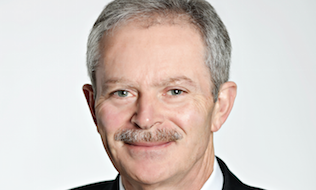
Despite a challenging start to 2016, the Healthcare of Ontario Pension Plan improved its investment return to 10.4 per cent by the end of the year. The number was up from 5.1 per cent in 2015.
The fund’s net assets reached $70.4 billion, up from $63.9 billion in 2015. Its investment income for 2016 was also higher at $6.6 billion, compared to $3.1 billion the year before.
“In January last year, we had the worst . . . record in stock markets,” said Jim Keohane, president and chief executive officer at HOOPP, during the pension fund’s annual results presentation in Toronto on Thursday.
“During the year, we dealt with other issues, such as extremely low interest rates, we had the Brexit vote and the volatility that came around that and at the end of the year, we had the U.S. presidential election and the market reactions to that, which was quite unexpected, I would say. Despite that, we ended up having a very strong year.”
Read: HOOPP’s 2015 return slides to 5% amid volatility
The pension plan’s 10-year annualized return stands at nine per cent.
In its report, HOOPP credited liability-driven investing for providing stability through challenging markets. The approach uses two investment portfolios: a liability hedge portfolio that seeks to mitigate risks associated with pension obligations and a return-seeking portfolio designed to earn incremental returns to help keep contribution rates stable and affordable.
In 2016, the liability hedge portfolio provided approximately 38 per cent of the pension fund’s investment income. Nominal and real-return bonds generated returns of 3.9 per cent and 6.8 per cent, respectively. The real estate portfolio was also a significant contributor during the year, with a 12.2 per cent currency-hedged return.
Within the return-seeking portfolio, which provided 62 per cent of the fund’s income, public equities returned 12.9 per cent, while private equity investments returned 15 per cent on a currency-hedged basis. Other return-seeking strategies, particularly those around absolute returns, also made significant contributions to the fund’s income.
Read: Five questions with HOOPP’s Jim Keohane
“It was an unusual year in the sense that every strategy in every asset class actually contributed positive to the return of the fund, and it’s pretty rare when that happens, but it did happen last year,” said Keohane.
“Fixed income was a strong contributor. . . . Private equity and real estate both had a strong year,” he added.
HOOPP also maintained its funded status of 122 per cent on a smooth asset basis in 2016, a metric Keohane considers the most important in gauging the success of the pension fund. “It really measures your ability to meet the pension promise to the members . . . because it considers both assets and liabilities in that calculation,” he said. “During 2016, our surplus increased by $1.1 billion to $15.9 billion, which is an increase of two per cent over the year. On a regulatory filing basis, the fund is 122 per cent funded . . . so we’re in a very strong funded position.
“That funded position is valuable to members in a lot of ways. First, it’s a big risk mitigator because we’ve got that cushion. Inevitably, when a big downturn comes along, we’ll be able to absorb that and be fully funded and continue to meet our obligations to members. And it also gives the board the opportunity to consider benefit increases to members or price decreases to members and employers, so there are discussions ongoing on that right now.”
Read: How to manage the long-term obligations of a DB pension promise
